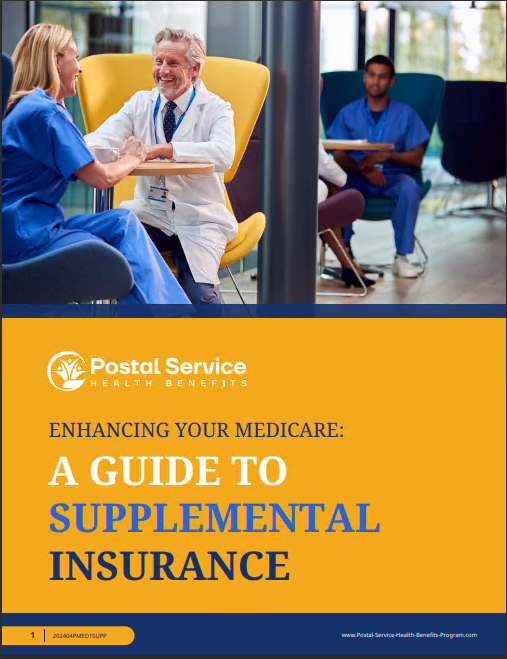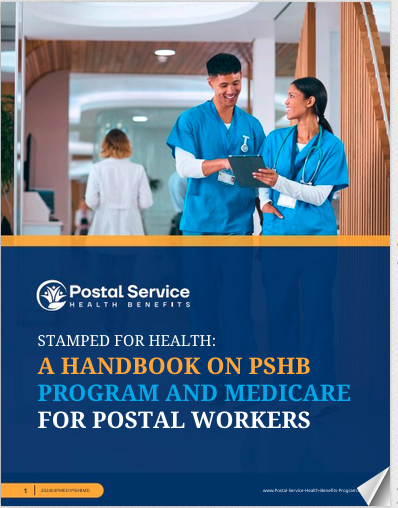Key Takeaways
-
Medicare integration with Postal Service Health Benefits (PSHB) plans in 2025 can save USPS retirees significant healthcare costs.
-
Knowing the enrollment process and understanding coverage options ensures you make informed decisions about your benefits.
Understanding Medicare and PSHB Plans
If you’re a USPS retiree, transitioning to the Postal Service Health Benefits (PSHB) program while integrating Medicare can feel overwhelming. Fortunately, 2025 marks a streamlined approach to managing your healthcare needs. By understanding how Medicare works alongside your PSHB plan, you can maximize coverage and minimize out-of-pocket costs. Here’s everything you need to know to make the most of these benefits.
What Is the PSHB Program?
PSHB is the new health benefits system exclusively for Postal Service employees, retirees, and their families. Starting in 2025, it replaces the Federal Employees Health Benefits (FEHB) program for this group. While the transition is automatic for many, staying informed about plan details is crucial for ensuring your coverage meets your needs.
Why Medicare Matters for USPS Retirees
Medicare becomes a critical component of your healthcare once you turn 65. Many USPS retirees qualify for Medicare Part A (hospital insurance) at no cost, and most opt to enroll in Part B (medical insurance) to enhance their coverage. When paired with a PSHB plan, Medicare helps reduce out-of-pocket expenses and provides comprehensive care.
Medicare Enrollment: Key Timelines and Requirements
Initial Enrollment Period (IEP)
Your Initial Enrollment Period lasts for seven months around your 65th birthday—three months before, the month of, and three months after. Enrolling during this time avoids late penalties and ensures your benefits start as soon as possible.
Special Enrollment Period (SEP)
If you’re still working or covered under an employer’s plan when you turn 65, you may qualify for a Special Enrollment Period to sign up for Medicare without penalties after your employment ends.
Mandatory Enrollment for PSHB
One unique aspect of PSHB is that Medicare-eligible retirees and family members must enroll in Medicare Part B to maintain PSHB coverage, with some exceptions for those retired before January 1, 2025. This requirement ensures a coordinated benefits system that reduces overall costs.
Pairing PSHB with Medicare: How It Works
Coordinated Benefits
PSHB plans are designed to work seamlessly with Medicare. Medicare becomes your primary payer, covering the majority of your healthcare costs. Your PSHB plan acts as secondary coverage, filling in gaps such as deductibles, coinsurance, and copayments.
Prescription Drug Coverage
In 2025, Medicare-eligible PSHB enrollees automatically receive prescription drug coverage through a Medicare Part D Employer Group Waiver Plan (EGWP). This integration simplifies medication costs and ensures comprehensive pharmaceutical coverage.
Cost Savings
By combining Medicare with a PSHB plan, retirees often enjoy reduced premiums and out-of-pocket expenses. Many PSHB plans waive deductibles and even offer partial reimbursements for Medicare Part B premiums, making healthcare more affordable.
Steps to Maximize Your Benefits
1. Review Your Plan Options
During Open Season, compare available PSHB plans to determine which one best complements Medicare. Consider factors like premium costs, provider networks, and additional benefits such as vision or dental care.
2. Understand Medicare’s Role
Familiarize yourself with what Medicare Parts A, B, and D cover. This understanding helps you predict costs and ensure there are no gaps in your coverage.
3. Enroll in Medicare Part B
Since PSHB requires most retirees to have Part B, make sure to enroll during your IEP or SEP. Missing the enrollment window could result in penalties and loss of PSHB coverage.
4. Leverage Preventive Services
Medicare and PSHB plans often cover preventive care, such as screenings and vaccines, at no additional cost. Taking advantage of these services can help you stay healthy and avoid larger medical expenses.
Key Considerations for Spouses and Family Members
Eligibility for PSHB
If your spouse or eligible dependents are covered under your PSHB plan, they must also meet Medicare enrollment requirements when they become eligible. This ensures the entire family maintains comprehensive coverage.
Coverage Coordination
For spouses under 65 or not yet eligible for Medicare, PSHB plans provide full benefits. Once they become Medicare-eligible, their coverage transitions to align with Medicare guidelines, just like yours.
Planning for Healthcare Costs
Premiums and Deductibles
In 2025, the Medicare Part B standard premium is $185, and the deductible is $257. PSHB plans often complement these costs by waiving deductibles or offering reimbursements. Be sure to calculate how these expenses fit into your budget.
Out-of-Pocket Drug Costs
Medicare Part D introduces a $2,000 cap on out-of-pocket drug expenses in 2025, a significant financial relief for retirees with high prescription needs. PSHB plans integrated with Medicare Part D simplify payment structures and reduce overall costs.
Additional Benefits
Many PSHB plans include supplemental benefits such as hearing aids, routine vision care, and gym memberships. These extras can add value and improve your quality of life.
Navigating the Enrollment Process
Open Season Deadlines
Open Season for PSHB enrollment typically runs from mid-November to mid-December each year. This period is your opportunity to review and adjust your plan.
Automatic Enrollment
Most USPS retirees are automatically enrolled in a PSHB plan corresponding to their previous FEHB coverage. However, verifying your enrollment details is essential to ensure your needs are met.
Qualifying Life Events (QLEs)
Outside Open Season, changes to your PSHB plan are allowed only during Qualifying Life Events, such as marriage, divorce, or the birth of a child. Keep these in mind when planning your healthcare strategy.
Common Questions About Medicare and PSHB
What Happens If I Don’t Enroll in Medicare Part B?
Failing to enroll in Part B when required could lead to significant penalties and loss of PSHB coverage. Exceptions apply only to specific groups, such as those retired before January 1, 2025.
Can I Keep My Current Doctors?
Most Medicare and PSHB plans offer extensive provider networks. Confirm with your providers that they accept both Medicare and your PSHB plan to avoid disruptions.
How Do I Handle Prescription Costs?
With the new $2,000 out-of-pocket cap for Part D, managing prescription expenses is simpler than ever. PSHB’s integrated drug coverage ensures you’re not caught off guard by high costs.
Staying Informed and Proactive
Healthcare planning requires regular attention. Stay up-to-date with annual changes to Medicare and PSHB plans. Reading your Annual Notice of Change (ANOC) letter helps you understand modifications to premiums, deductibles, and benefits so you can adjust accordingly.
Why Medicare Integration Matters for USPS Retirees
By coordinating Medicare with PSHB coverage, USPS retirees enjoy a robust healthcare system designed to minimize costs and maximize benefits. Understanding your options and acting during enrollment periods ensures you’re prepared for the healthcare challenges of 2025 and beyond.







